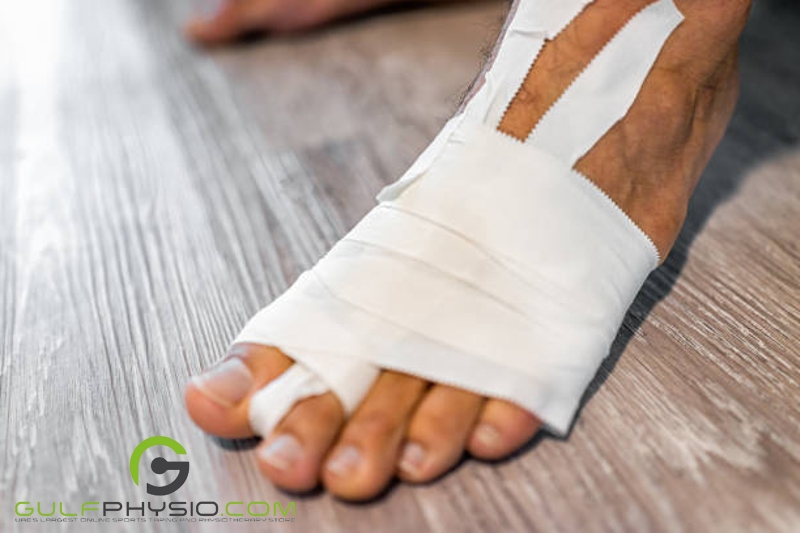
Even if you aren’t a fan of sports, more likely than not you’ve seen athletes use tape in a myriad of ways before, during, and after games, you may have also seen the use of tape to treat long-term injuries not only in athletes but also as a common form of treatment. Yet, what exactly does taping do? How exactly does a thin strip of cloth affect our muscles?
What is “Taping”?

Taping is a common method for preventing injury; using different kinds of tape to keep muscles or bones in a specific position, particularly in areas near joints like ankles, wrists, and hands. It is also a technique that aims to restrict the movement of injured joints, reduce swelling, support anatomical structures, and protect from re-injury. It is also a means of rehabilitation or prophylaxis, providing support and stability when needed. In general, taping serves as a first-aid tool; preventing injury, and protecting injured anatomical structures during healing.
Benefits of Taping
As mentioned in the previous section, taping has a myriad of uses in both athletics and the medical field. In this section, we will take a closer look at these uses and their benefits.

- Injury Prevention – Taping is a useful tool for athletes to prevent injuries. Taping slightly lifts the skin, allowing for increased blood flow and lymphatic drainage. This prevents muscle cramps, spasms, and other common injuries. Making use of the correct kind of tape also maintains flexibility and comfort without restricting the range of motion, and in turn, reduces inflammation. It can be beneficial for those suffering from chronic muscle fatigue or cramps during workouts. However, it is important to consult a certified professional before applying tape to prevent injury, so as not to commit mistakes.

- Rehabilitation – While taping does help in injury prevention, it is not a foolproof solution, and unfortunately, injury still occurs. In the event of injury, physical therapists have utilized the method for rehabilitation. Depending on the type of injury, professionals utilize different tapes ranging from rigid tape to limit movement, to more elastic tapes to help increase blood flow.

- Pain Management – Multiple research papers have highlighted the effects of various taping styles on pain relief, such as this one published by The National Library of Medicine focusing specifically on the effects of Kinesio Taping for pain. Depending on the severity of the pain, different types of tape may be used alongside other forms of treatment.
Conclusion

Taping is a popular technique for preventing injuries by maintaining particular bone or muscle postures close to joints such as the hands, wrists, and ankles. It maintains anatomical structures, limits mobility, lessens edema, and guards against further damage. In sports and medicine, it is a first-aid technique that offers rigidity and support while a wound heals. Taping has advantages in pain management, rehabilitation, and injury prevention. Using tape to elevate the skin and improve blood flow, athletes can avoid common problems such as muscle cramps and spasms. For rehabilitation, physical therapists utilize a variety of tapes, from elastic to rigid. Studies have demonstrated the benefits of numerous taping techniques for pain management, and different kinds can be applied in addition to other therapies.
If you want to know more about sports and athletic taping, read our articles “Maximising Safety in Sports: The Essential Guide to Athletic Taping for Injury Prevention” or “The History and Evolution of Athletic Taping” or learn more from our blog here.
Disclaimer
GulfPhysio.com and all of its content are for informational purposes only. All information is believed to be accurate at the time of posting and should NOT be construed as professional medical advice. Please seek a medical professional in the event of pain or injury.



